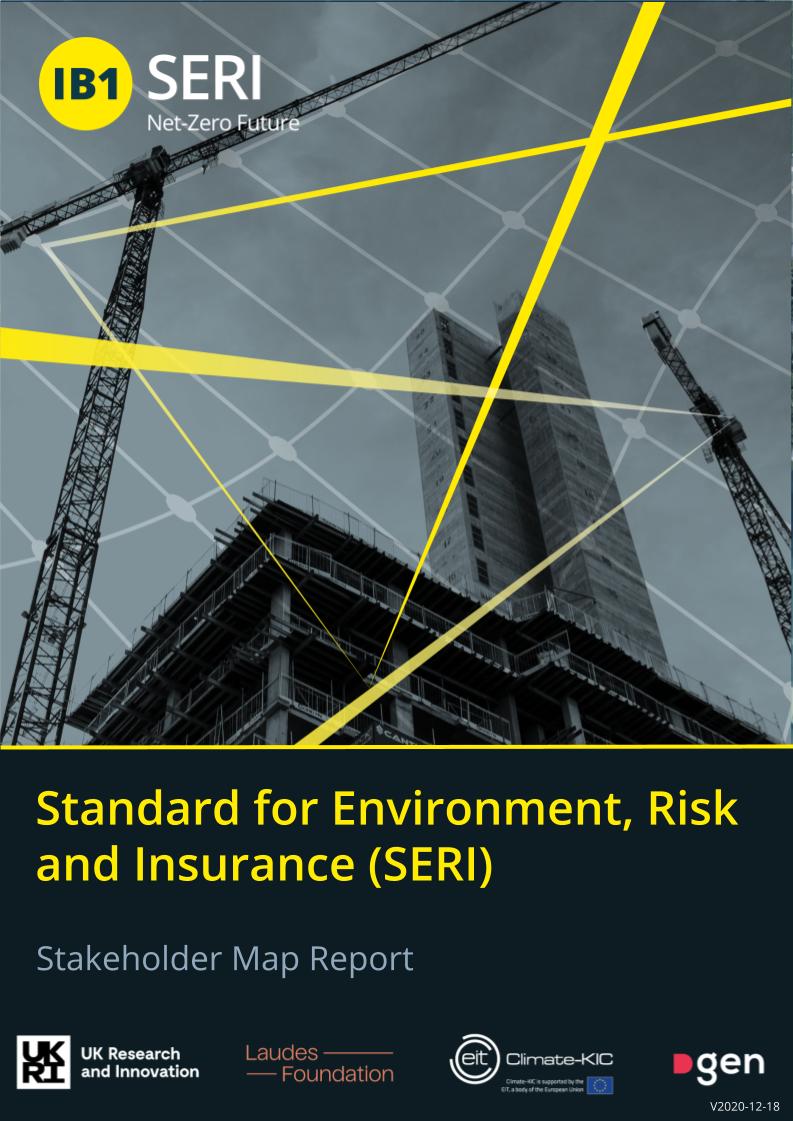This document is open for comment, click here for the report.
Executive Summary
As part of the Standard for Environment, Risk and Insurance (SERI) project, we mapped out the ecosystem in which insurance sits to identify the major stakeholders, to understand how they interact and the nature of their relationships. We did this to explore how information is shared between participants in the insurance and wider ecosystem, and identify whether there are any gaps or bottlenecks, such as data flows, which could be unblocked to enable net-zero considerations in the insurance marketplace.
Our findings are summarised below:
- The insurance ecosystem is made up of different internal and external stakeholders, connected broadly by three means: distribution channels, money flows as investments or commercial relationships, and information or data flows.
- Insurance brokers, external model vendors and re/insurance companies are significant data users as well as data providers. Risk modellers, particularly catastrophe modellers, disaster risk managers and actuaries are important internal stakeholders because they perform significant data functions in the insurance ecosystem. Other stakeholders such as investors, credit agencies and regulators are important insurance stakeholders and data users. These stakeholders require a variety of data, which is being utilized in different ways in the insurance value chain and wider ecosystem. Research into the insurance data infrastructure, methods and frameworks is on-going and informs the SERI Systems and Standards work.
- Product innovation through the digitalisation and increased sophistication in data use is many-fold (e.g. parametric solutions and Insurance-Linked Securities), but the inclusion of climate change related data and how it fits into the insurance process is still unclear through desk research. Stakeholder mapping has informed SERI’s stakeholder engagement efforts to elucidate this by bringing to light players making significant contributions to climate related risk considerations in insurance products and wider industry considerations.
- There is work being done in surrounding climate risks by various players including academic and public research agencies, government and development banks, insurance regulators brokers, insurers, reinsurers, model vendors, and other members of the insurance ecosystem. These efforts are accelerating climate change related considerations in the insurance business, with various initiatives and projects implemented by public and private insurance stakeholders along the insurance value chain. We continue to monitor and engage with these activities through stakeholder engagement and SERI partner discussions.
By understanding the value chains, data layers and “gatekeepers” of the insurance ecosystem, we wanted to uncover levers that could facilitate decarbonisation across the industry through shared data, and how these data can help government policy and future planning. The stakeholder mapping exercise is on-going and outputs from this activity feed into many aspects of the SERI project, including Product Innovation, User Needs Analysis, and the Phase 1 Standards & Policy Innovation.


